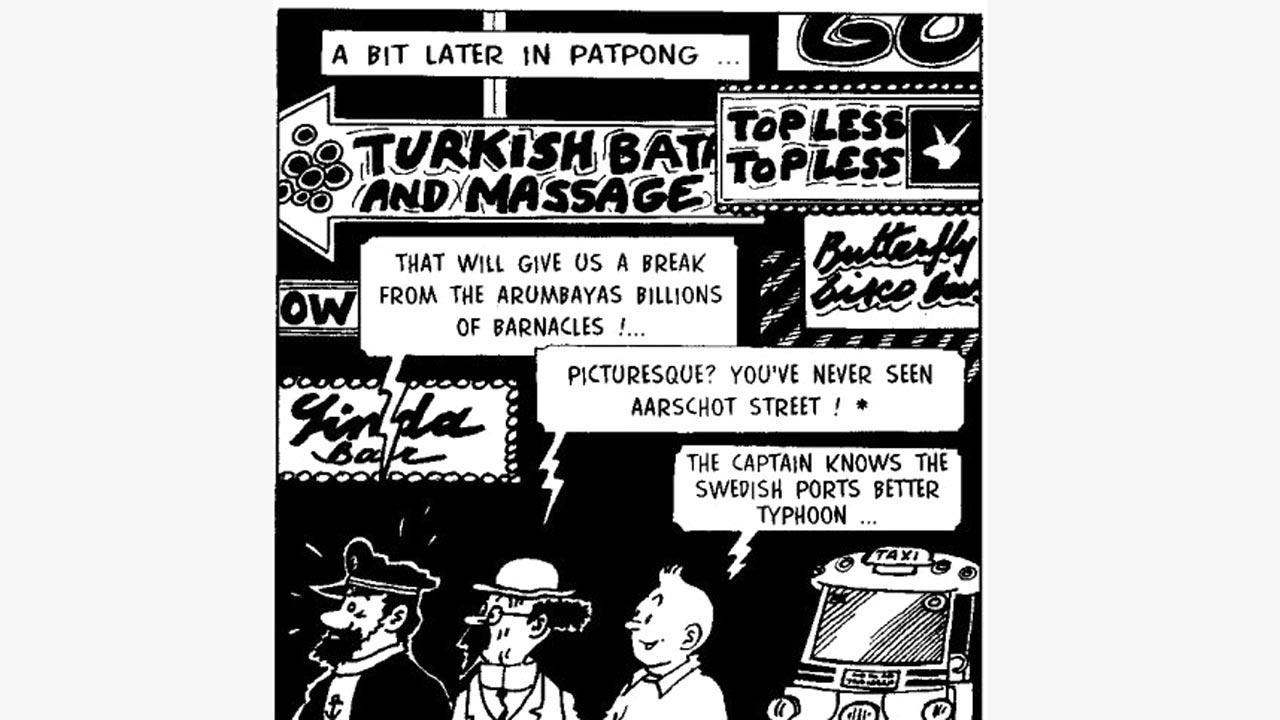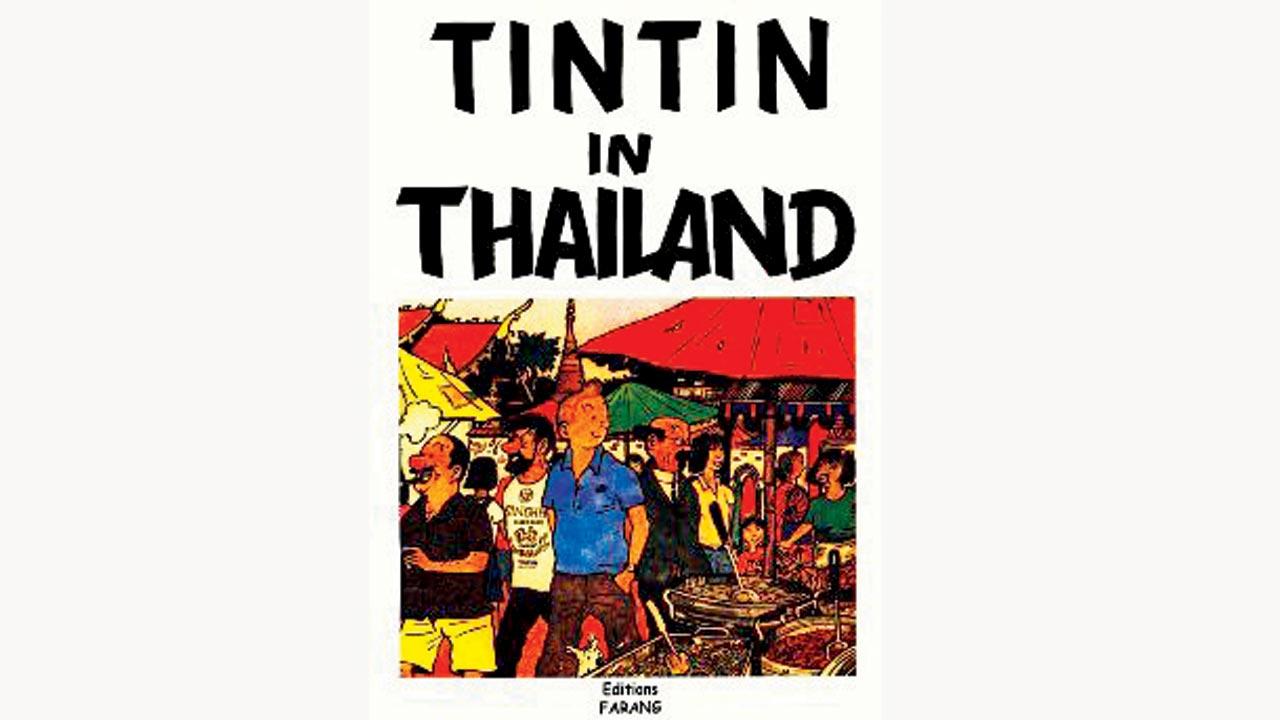On spotting a copy of Tintin in Thailand peering from a secondhand bookshop in Fort, we were piqued to review the parody fiction and find other pastiches of the Belgian reporter’s not-so-familiar exploits

An excerpt from the comic book
When this writer was growing up, comic book series either meant The Adventures of Tintin or those of Asterix. With a narrow window into the genre, we dearly held on to our select heroes who capered through thrill and unsought challenges. And even after 20 years, we like to remember Tintin as a teenage adventurer, much like the aspirational family symbol of a ‘good’ cousin. Turns out — after a chance revelation at a second-hand bookshop in Fort — such fictional cousins hook up in Patpong, the red light district of Bangkok.
ADVERTISEMENT
 An illustrated section from the volume where Tintin, Haddock and Calculus are excited to experience pole dancing in Patpong
An illustrated section from the volume where Tintin, Haddock and Calculus are excited to experience pole dancing in Patpong
Tintin has been in the land of black gold, and the Soviets, in America, Tibet and on moon, but in this self-published book, he — along with Captain Haddock and Professor Calculus — visits Chiang Mai. Written by Belgian author Baudouin de Duve aka Bud E Weyser, the plot requires the detective to trace and bring back Joylon Wagg, who departed on a tour and never returned. Despite the mystery as our context, the narrative progresses as a paid trip — by Wagg’s wife — for three sex-crazed men. The cover art developed by a designer in Antwerp makes it a close imitation of volumes from the original series. Although the cover exhibits a colour palette characteristic of the comics, the rest of the book is in black and white.
 An illustration from Tintin in Thailand. Pics Courtesy/Farang
An illustration from Tintin in Thailand. Pics Courtesy/Farang
As a reader, our judgments aren’t about the outburst of profanity or the shifting focus on sex; it’s rather about the crassness it comes wrapped in. In Hergé’s version, due to strict censorship in the 1940s, Captain Haddock was conceived as a short-tempered sailor with a quirky vocabulary. Often racist or colourist, his abuses were not always sexist. Haddock in Weyser’s fiction calls a woman discussing her missing husband, “a mollusc making a megalomaniacal menopausal crisis,” ogles at “cute arses” of airhostesses, and sparingly returns to “Billions of blue blistering barnacles.” Neither Tintin nor Calculus seems unaligned with his behaviour.
 A pre-owned books stall in Fort. Pic/Sameer Markande
A pre-owned books stall in Fort. Pic/Sameer Markande
We like the callbacks, though. A callback in comedy refers to a previously mentioned joke or fact to mark a story’s passage. At the very beginning, Weyser self-references to the actual plot. He positions Tintin and Haddock in Marlinspike Hall as two unhappy and penniless souls, who have been left nearly redundant after their creator, Hergé’s death. Throughout the parody edition, the theme keeps emerging. For instance, the primary publishers shadow the trio in Thailand to keep a check on their efforts of publishing another adventure without paying royalties. The author seems to be communicating his intent to his readers.
Bangla Angle
Bangla is the first Indian language that Tintin spoke. Nirendranath Chakraborty’s translations claimed young Bengali readers, who’d flood Hergé’s fan mail in the ’80s.
Would Hergé have approved?
With Haddit and Spewy: Tumtum and the Forged Expenses is a short comic sequel by Rian Hughes. The story opens in New York City, reimagining Tintin after the heydey of his journalism career. In this edition, Captain Haddock is Haddit, Snowy is Spewy and the incompetent detectives are The Thomppson Twins.
A doppelgänger, almost: The 1996 film, Camping Cosmos, shows a lookalike of Tintin. The character goes by a different name but his appearance — the quiff, outfit and the white fox terrier — give away the literary reference.
 Subscribe today by clicking the link and stay updated with the latest news!" Click here!
Subscribe today by clicking the link and stay updated with the latest news!" Click here!







